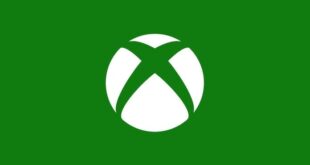Piracy is still a fairly big problem to the publishers and developers of the gaming world, but there now exists a potentially greater threat to the livelihood of the people responsible for actually making the games, and it comes in what would appear to be a completely benign form: the second-hand market.
The second-hand market is massive right now and, while it’s incredibly convenient for gamers, it starves the publishers and developers of the much needed – and deserved – revenue to keep them in business, therefore allowing them to continue making the great games we all love. The reason for this is simple: all of the profit from the second hand market sales goes to the retailer rather than the publisher and developer.
This problem has caused publishers to push developers hard to create reasons for the gaming public to hold on to their game rather than sell it on at a cut price. So while the second hand market is healthy and strong, how can the game development community give their games that much needed extra life?
For the rest of this article I’ll talk about the current most popular methods that many developers are employing to keep players playing many months – sometimes years – after they originally purchased their game.
MULTIPLAYER GAMEPLAY
Having a fantastic solo game is generally not enough to keep players interested for anything more than a month or two these days. In recent times very few of the biggest franchises have been released without some form of multiplayer option.
Some developers aim at the casual market, creating games that are played competitively on the same box where all the family can get involved and have fun. The Wii has cornered the market in this area. Quite simply put, nobody does this better than Nintendo. Some of the most commercially successful titles of the past few years are on the Wii, and despite being released almost three years ago they are still selling in droves at full retail price.
Other developers are focusing on a more tried and tested slice of the market: the hardcore gamer. Bungie, Infinity Ward and Epic are the big hitters in this area. Not only do they create quality solo game experiences, they back them up with compelling co-operative and competitive online multiplayer game modes. These online game modes create self-sufficient communities that drive continued online play, and they also do a great job of marketing the game through word of mouth. These kinds of gaming communities are the very life blood of these developers.
ONLINE PROGRESSION
The addition of online services like Xbox Live – and to a lesser extent PSN and Wi-Fi Connect – have allowed developers to arm their games with progression-based features that drive continuous online play. The goal here is to create a feature set that allows players to feel like every minute they spend playing the game is worthwhile; everything they do will enhance their online status and improve their gameplay experience.
Some games do nothing more than provide a rank that constantly increases for gameplay hours logged online. Others do a far better job where online-only performance or skill-based objectives must be completed to unlock new functional content that not only increases their rank but also alters their gaming experience.
No game does this better than the fantastic COD4 – it’s an incredibly simple concept but it’s been implemented to near perfection. The more gamers play the better they get, the better they get the more they progress, the more they progress the more renowned they become. It’s a system that almost allows gamers to become online gaming celebrities.
DOWNLOADABLE CONTENT
DLC is easily the best way to keep gamers interested in your game, and it’s a way for publishers and developers to maintain a revenue stream for their game regardless of the effect of the second-hand market.
The only problem with DLC is the variation in the content available and the prices set. There have been various different types of DLC released in the past couple of years; some were very well received by the gaming community while others were condemned.
From my own point of view the DLC that has served its games well has been gameplay-focused. New functional content that delivers new ways to play is better than new aesthetic content that does nothing more than dress the game up in a different way.
The aesthetic content route is one that I personally detest. Yes, publishers and developers need to make money and there are easy ways to get money from loyal gaming communities, but there’s only so much that these gamers will take, as a few developers have realised to their detriment – and rightly so.

 MCV/DEVELOP News, events, research and jobs from the games industry
MCV/DEVELOP News, events, research and jobs from the games industry



